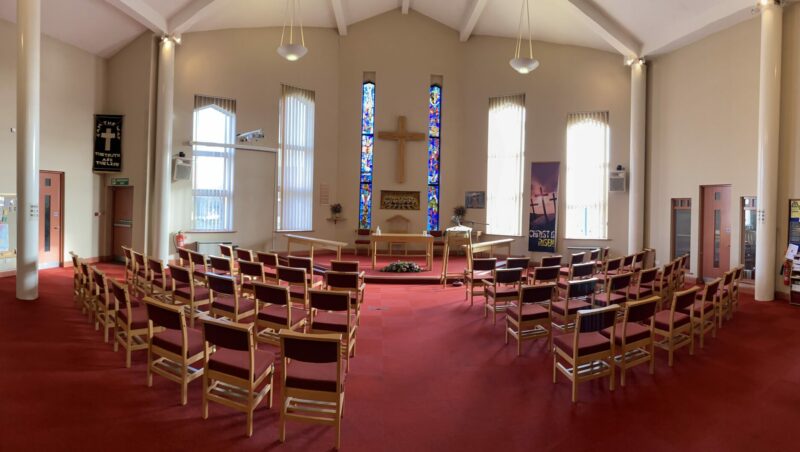
Inside St.Paul’s Kirkdale
The Clyde Street Church, known as the Episcopal Chapel of Kirkdale, was a chapel of ease to St Mary’s, Bootle. It was also used as a day school, Sunday School and for evening classes. After ministering there for some years Reverend Edward Lester felt that the time had come for a church to be built to serve the district.
A meeting was held to discuss the matter and it was decided to arrange weekly house to house collections throughout the parish. By this means £120 was raised in 12 months towards the cost of building a church. Reverend Lester then approached Lord Derby, who owned the land on Brasenose Road, pointing out the need for a church and informing him of the progress already made. Lord Derby granted 2,000 m2 of land and £1,000 towards the Endowment Fund. A further £8,000 was needed for the building and Reverend Lester succeeded in raising this sum. Mr Christopher Bushell, one of the Trustees of the church laid the foundation stone and the consecration took place on 16th July 1868.
With the population growing and new houses being built around the church there arose a need for a larger day school. A deputation from St Paul’s Church made another approach to Lord Derby who promised the land on which to build the school (and a vicarage) when the parish raised £1,000. A sale of work and further appeals by the vicar raised this sum of money and the land was made available.
This period of almost 40 years strenuous work inevitably took its toll and Reverend Lester resigned the living in 1901. The continuing task fell to Reverend Richard Graham Bell.
The church was made more comfortable by the installation of the new-type incandescent gas light at a cost of £45. This drew comments from the local press at the high standard of lighting at St Paul’s, and Bishop Chavasse likened this to ’the light of the Holy Spirit, so evident in the life of the church’.
The fact that there was a growing congregation was most encouraging and the increasing number of children in the Sunday School led to the setting up of a weekly training class for prospective teachers. As a result of this class, 25 new teachers were added to help in the teaching of some 600 children.
In 1908 a new Parish Hall was opened in Celia Street at an estimated cost of
£1,600. The foundation stone was laid by the Lady Mayoress, Mrs Caton, on
Saturday 21st March in 1908. This was to serve the parish with its 6,000 people eastward of the old Lancashire and Yorkshire Railway Line.
The church and parish suffered greatly during the 2 World Wars. Indeed St Paul’s was the only dockside church left standing following the May Blitz of 1941 although the church did suffer slight air raid damage and the presence of a delayed-action bomb nearby. This bomb during its descent took the top off the steeple.
As a result of Local Authority development, St Paul’s Church was closed. The Mission Hall was used as a church from September 1973.
In 1981 St Paul’s Church united with St Mary’s Church, Derby Road Bootle to form the parish of St Mary with St Paul, Bootle.
During the late 1990’s/early 2000 the Mission Hall in Celia Street underwent extensive alteration/extension. A new worship extension was constructed and the Mission Hall was internally reordered with a first floor added: this was named the Sheppard Centre and was specially designed with facilities to be used by the local community.
St Paul’s Church split with St Mary’s and in 2002 joined with St Lawrence’s Church as the Parish Church of St Lawrence with St Paul, Kirkdale; one parish but with 2 worship centres.